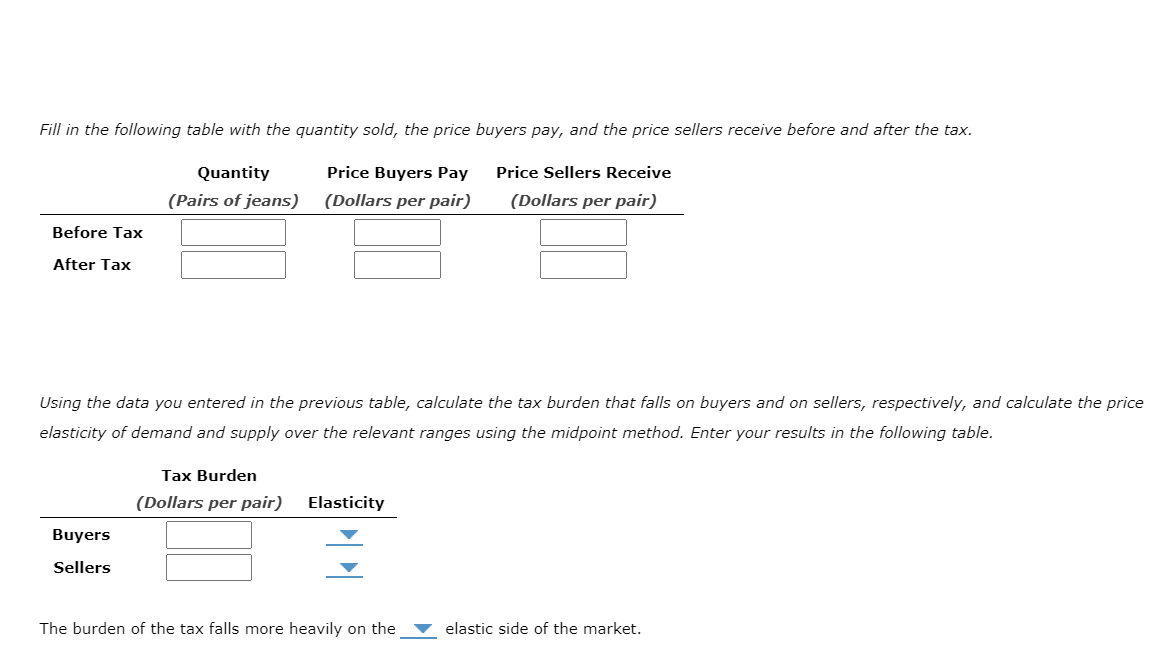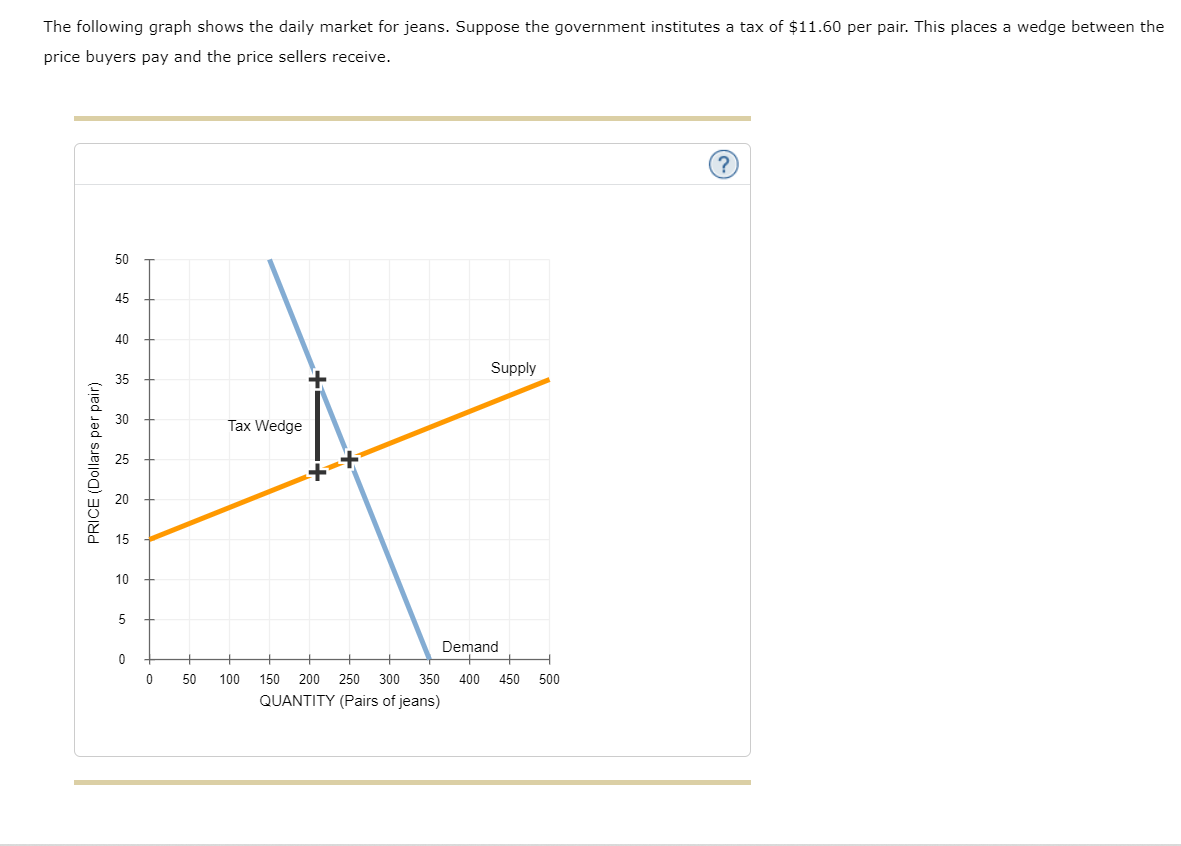Fill in the following table with the quantity sold, the price buyers pay, and the price sellers receive before and after the tax. Quantity Price Buyers Pay (Pairs of jeans) (Dollars per pair) Price Sellers Receive (Dollars per pair) Before Tax After Tax Using the data you entered in the previous table, calculate the tax burden that falls on buyers and on sellers, respectively, and calculate the price elasticity of demand and supply over the relevant ranges using the midpoint method. Enter your results in the following table. Buyers Sellers Tax Burden (Dollars per pair) Elasticity The burden of the tax falls more heavily on the elastic side of the market.
Fill in the following table with the quantity sold, the price buyers pay, and the price sellers receive before and after the tax. Quantity Price Buyers Pay (Pairs of jeans) (Dollars per pair) Price Sellers Receive (Dollars per pair) Before Tax After Tax Using the data you entered in the previous table, calculate the tax burden that falls on buyers and on sellers, respectively, and calculate the price elasticity of demand and supply over the relevant ranges using the midpoint method. Enter your results in the following table. Buyers Sellers Tax Burden (Dollars per pair) Elasticity The burden of the tax falls more heavily on the elastic side of the market.
Chapter4: Supply And Demand: An Initial Look
Section: Chapter Questions
Problem 4DQ
Related questions
Question

Transcribed Image Text:Fill in the following table with the quantity sold, the price buyers pay, and the price sellers receive before and after the tax.
Quantity
Price Buyers Pay
Price Sellers Receive
(Dollars per pair)
(Pairs of jeans) (Dollars per pair)
Before Tax
After Tax
Using the data you entered in the previous table, calculate the tax burden that falls on buyers and on sellers, respectively, and calculate the price
elasticity of demand and supply over the relevant ranges using the midpoint method. Enter your results in the following table.
Buyers
Sellers
Tax Burden
(Dollars per pair) Elasticity
The burden of the tax falls more heavily on the
elastic side of the market.

Transcribed Image Text:The following graph shows the daily market for jeans. Suppose the government institutes a tax of $11.60 per pair. This places a wedge between the
price buyers pay and the price sellers receive.
PRICE (Dollars per pair)
50
45
40
35
25
10
5
0
0
Tax Wedge
50 100 150 200 250 300 350
QUANTITY (Pairs of jeans)
Supply
Demand
400 450 500
(?)
Expert Solution
This question has been solved!
Explore an expertly crafted, step-by-step solution for a thorough understanding of key concepts.
Step by step
Solved in 2 steps

Knowledge Booster
Learn more about
Need a deep-dive on the concept behind this application? Look no further. Learn more about this topic, economics and related others by exploring similar questions and additional content below.Recommended textbooks for you


Economics (MindTap Course List)
Economics
ISBN:
9781337617383
Author:
Roger A. Arnold
Publisher:
Cengage Learning



Economics (MindTap Course List)
Economics
ISBN:
9781337617383
Author:
Roger A. Arnold
Publisher:
Cengage Learning


Principles of Economics 2e
Economics
ISBN:
9781947172364
Author:
Steven A. Greenlaw; David Shapiro
Publisher:
OpenStax

